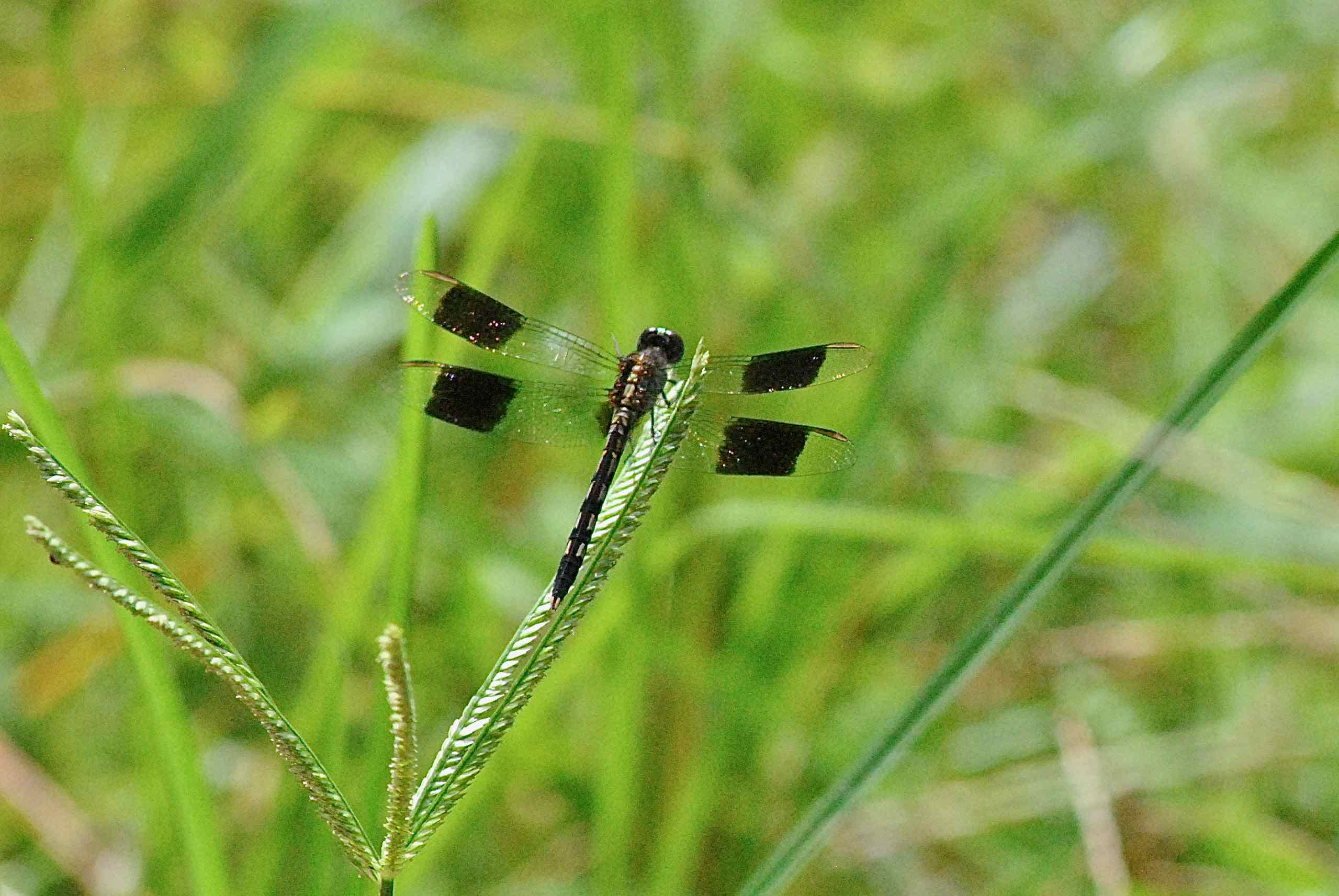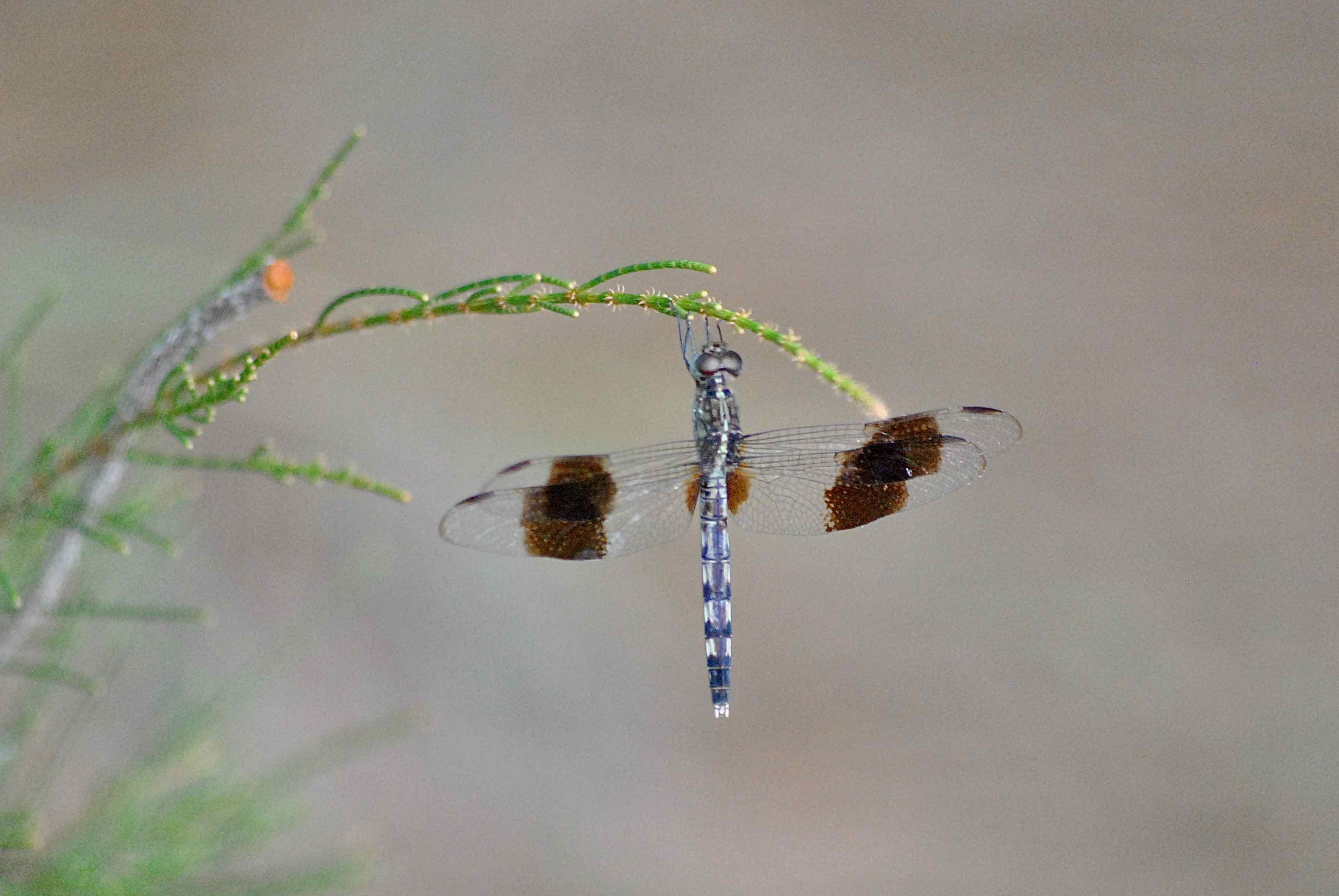
Four-spotted pennant dragonfly, photographed at Green Cay Nature Center, Boynton Beach, Palm Beach County, in July 2013.
The four-spotted pennant dragonfly, aka Brachymesia gravida to the world of science. Know the name and you've got a pretty good start on identifying it.
It's among the more commonly encountered dragonflies not only in Florida but in the eastern United States. And those large, blackish-brown spots, plus its habit of perching conspicuously, flag-like atop twigs, stems and grasses make the four-spotted pennant easy to, uh, spot and identify.
The four-spotted pennant is a "tropical" dragonfly, the only one native to the United State and the only one to wander as far north as the MidAtlantic states. Its range extends mainly along the Gulf and Atlantic coastal plains from Texas to New Jersey but can be found as far west as New Mexico and Arizona and as far north as New York, where it is consider critically imperiled. It's also considered "vulnerable" in Virginia.
It's also found as far inland as Oklahoma. Some records have it in Nebraska. However, it's never been seen south of the Rio Grande in Mexico. In Florida, its found in most peninsular counties, including all of South Florida, and in a few Panhandle counties as far west as Leon and Wakulla. The International Union for Conservation of Nature considers the four-spotted pennant population overall to be secure, with no major threats to its survival.
Up north, it's active during the warmer months — July into September in New Jersey, for example. In Florida, however, four-spotted pennants are active year-round
Four-spotted pennants are medium-sized as dragonflies go, ranging between two and two-and-a-quarter inches in length. Their faces are black and white, but become entirely black as they age. The thorax, or middle section of the body is brown in young four-spotted males, becoming dark blue as the dragonfly ages. Young females are orange or light brown, becoming dark brown as they age.
The namesake spots are large and rectangular in shape, brown to nearly black, denser in color near the leading edges, becoming thinner near the trailing edge. The wings are also marked by white stigmata on the leading edges of the wings near the tip. They're best seen in the bottom left photo.
Like other dragonflies, it likes to be around lakes and ponds, since that's where it spends the first part of its life, and that's where it reproduces. They prefer water that's shallow and sluggish, where there are few other dragonfly and dragonfly-related species. They can tolerate alkaline water and brackish water as well as fresh.
Four-spotted pennant dragonflies mate in flight, with the female depositing her eggs in water, sometimes guarded by the male. Like other dragonflies, four-spotted pennant nymphs go through various stages, called instars, as they develop, finally emerging from the water as adults. The entire lifecycle is about a year.
Four-spotted pennants are members of Libellulidae, the family of skimmers, and the largest family of dragonflies in the world.
Green Cay Nature Center



